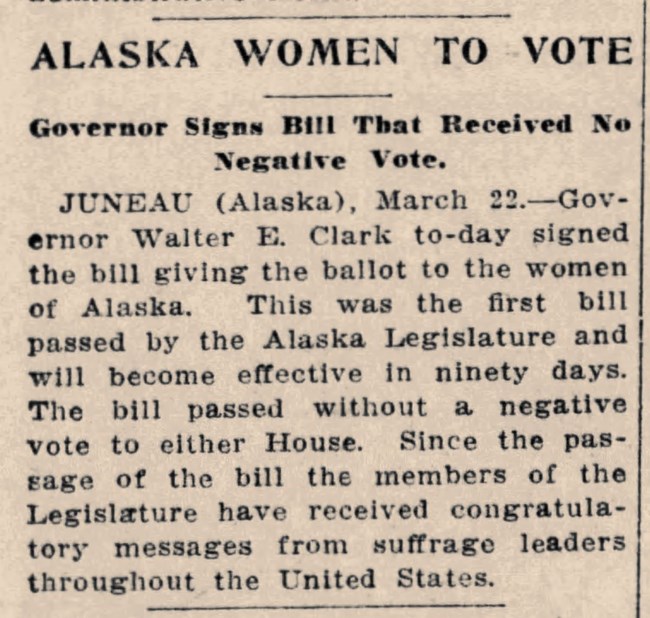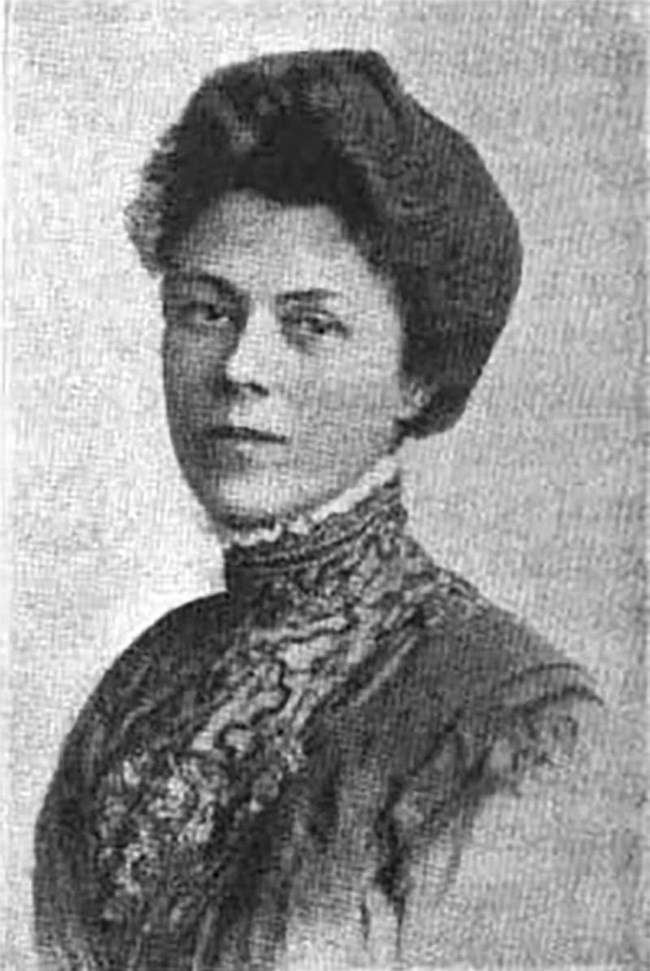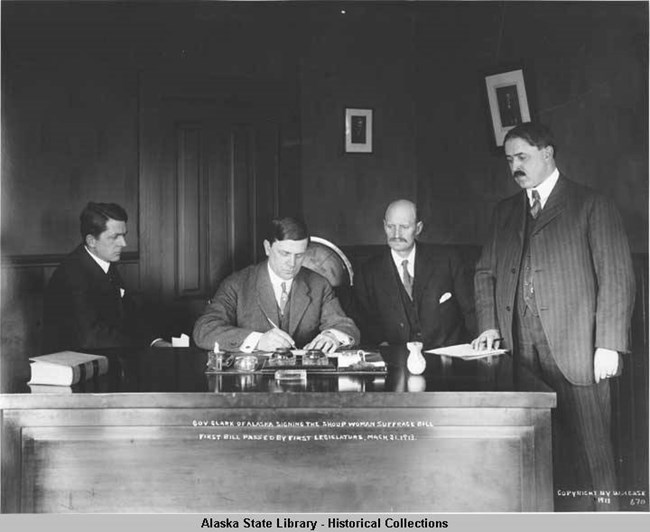Last updated: March 30, 2020
Article
Women's History Month in Alaska

This article appeared in the San Francisco Examiner on March 23, 1913.
The month of March has been symbolically important to women’s rights, nationally and internationally for over 100 years. Around 1911, March 8th began being recognized as International Women’s Day by several countries, including the US. In 1980 a National Women’s History Week was designated by Presidential Proclamation and in 1987 Congress established National Women’s History Month.

(Photo courtesy of Wikimedia Commons)
Alaska’s male-dominated government passed women’s suffrage, but female leaders organized and lobbied to make voting rights a reality. Cornelia Thompson Jewett Hatcher drafted a petition that granted women the right to vote and gathered signatures around Alaska.[3] Another important suffragist was Lena Morrow Lewis, who traveled around Alaska in the 1910s and spoke to large audiences in Fairbanks, Valdez, and Juneau about voting rights and other social reform issues.[4]

Alaska State Library, William R. Norton Photographs, ASL-P226-171
March, 2020 note:
The National Park Service is currently commemorating the 100th anniversary of the 19th Amendment, which passed Congress on June 4, 1919, and was ratified by the states on August 18, 1920.[6] The NPS is celebrating achievements of women throughout the country, and current female employees of the NPS are being recognized for their contributions to the agency.
If you're interested in contributing to this project, email Erik Johnson, Denali's historian.
[1] These victories for women’s suffrage in Alaska did not include voting rights for Alaska Native women. In 1915, the legislature acknowledged Alaska Natives' right to vote but only if they abandoned their customs and traditional way of life. Discriminatory practices against certain groups of voters have always occurred within various government jurisdictions. The Voting Rights Act of 1965 largely resolved many discrimination issues but Alaska Natives have continued to face obstacles to the ballot.
[2] Prior to being a territory, Alaska was a District and managed by the War Department. Territorial status gave Alaskans more representation through the legislature.
[3] In 1916, Lewis campaigned to be Alaska's Territorial Delegate to Congress, which made her the first woman to run for a national office in Alaska. Lewis ran as a Socialist against James Wickersham and Charles A. Sulzer (Sulzer won).
[4] Cornelia’s husband was Robert Lee Hatcher for whom Hatcher’s Pass was named. Cornelia was a part of the Woman’s Christian Temperance Union (WCTU), an organization involved with numerous social reforms during the Progressive Era.
[5] The Alaska Native Brotherhood was founded in 1912 (with one woman founding member, Marie Moon Orsen) and fought alongside the Alaska Native Sisterhood to achieve civil rights for Alaska's indigenous people.
[6] For a Constitutional amendment to be adopted, it must pass Congress (both the House and Senate) with two-thirds majority vote, and then must be ratified by three quarters of the states’ legislatures. Alaska was a Territory until 1959, so it did not vote on ratification.
